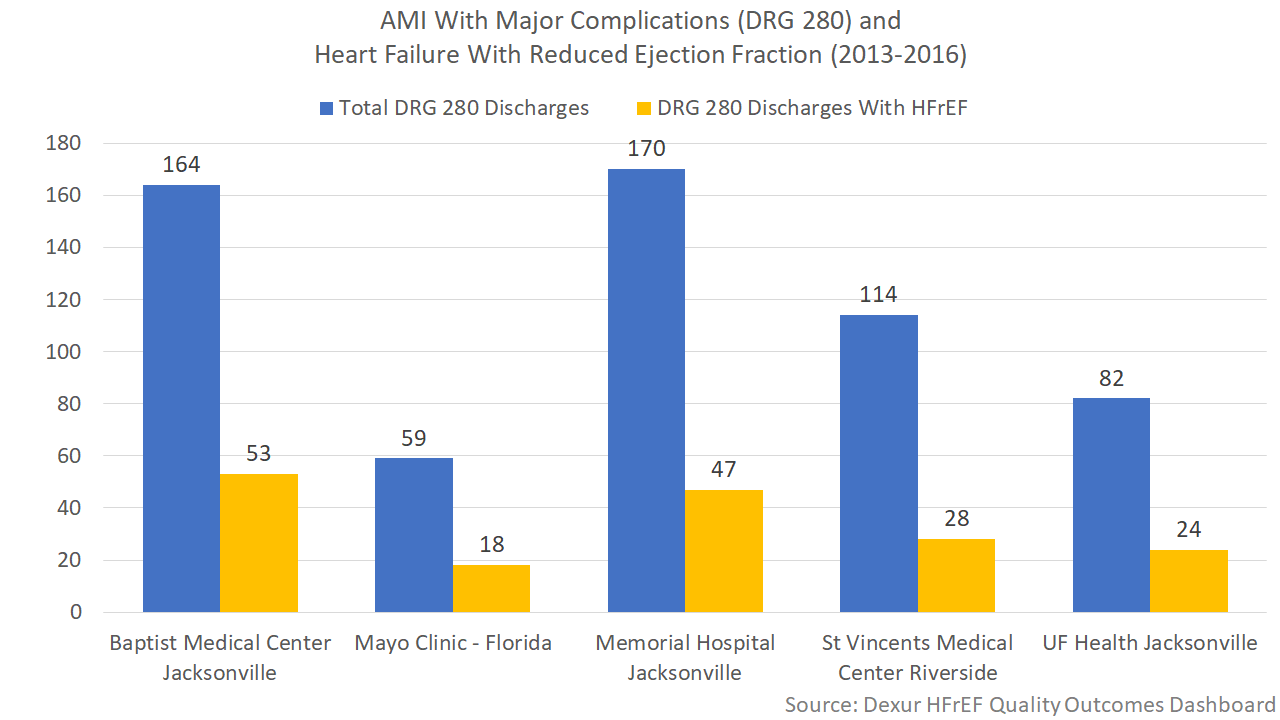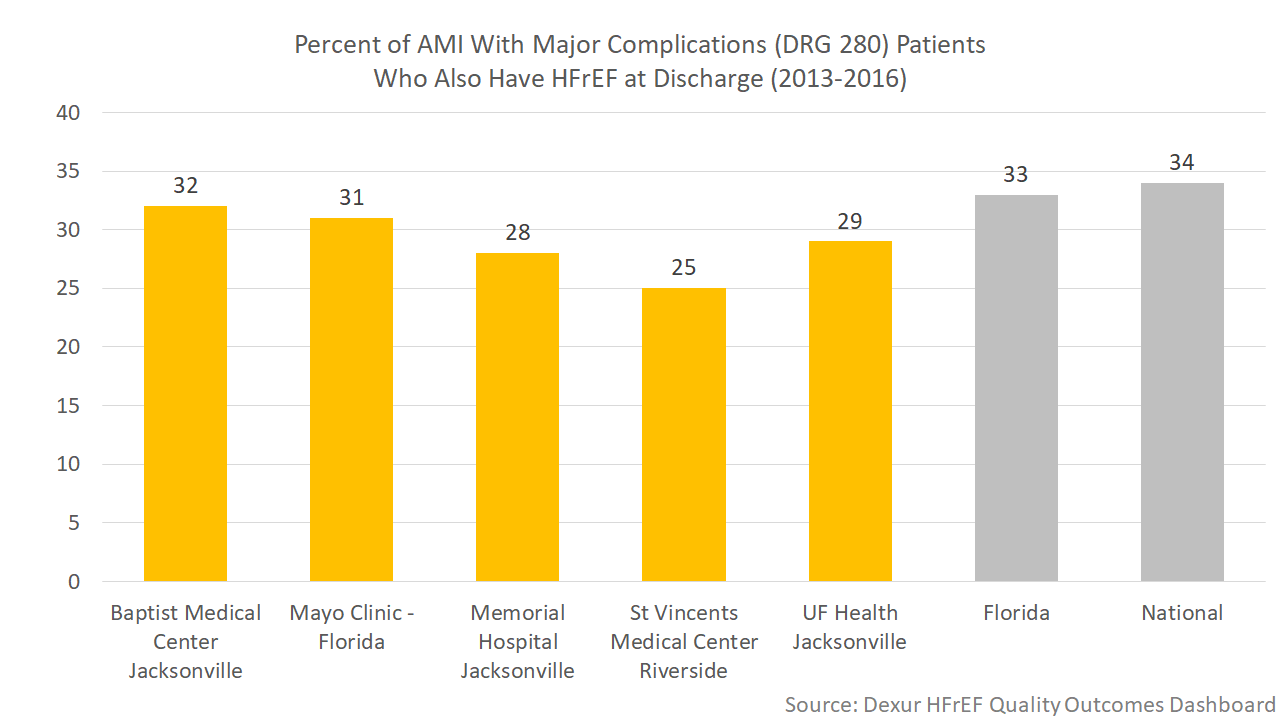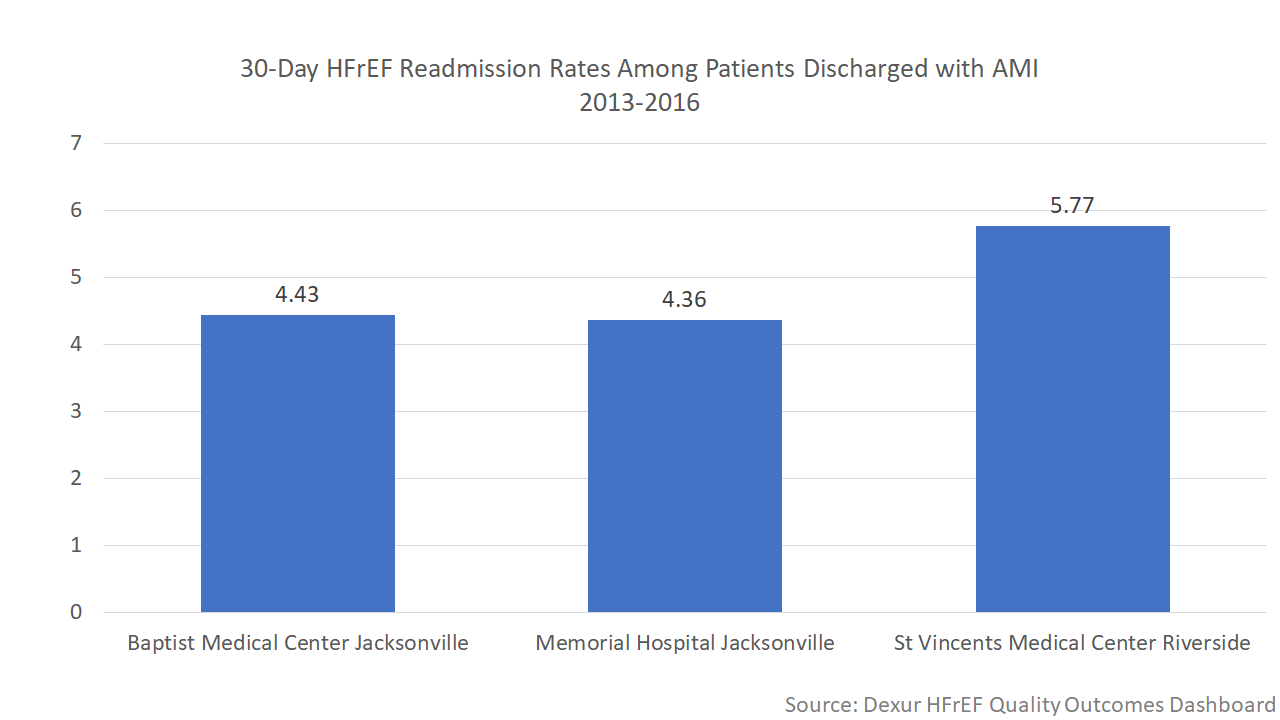30 Day All Cause Readmissions for AMI with HFrEF is an Indicator of WCD Value
In Heart Failure
Get Dexur’s Personalized Hospital Specific Presentation on Quality, Safety, Compliance & Education
By: James Pitt May. 31, 2018
It is difficult for hospitals to analyze the value of solutions whose effects primarily take place outside the hospital setting. Outpatient treatments such as wearable cardiac defibrillators (WCDs) may benefit patients, but these effects primarily take place outside the hospital. CMS’s HRRP program incentivizes reducing 30 day readmission rates for several conditions, including acute myocardial infarction (AMI).
Dexur analysts examined AMI at five hospitals in Jacksonville, Florida, following our analysis of implantable cardiac defibrillators in Jacksonville. 29 to 32% of patients with AMI with major complications or comorbidities (DRG 280) also had heart failure with reduced ejection fraction (HFrEF). However, at all five of these hospitals, this percentage was slightly lower than the state and national rates.


Three Jacksonville hospitals reported HFrEF-specific readmission rates. These ranged from 4.4% to 5.7% for patients discharged under all AMI DRGs. At these hospitals, 20% of AMI patients were readmitted within 30 days, and about 20% of those readmissions involved HFrEF. Therefore, reducing HFrEF readmissions could have a large impact on all-cause 30 day readmissions for AMI at these hospitals

There is state- and national-level evidence that patients with more severe AMI are more likely to have HFrEF. Patients who survive AMI are grouped into DRG 280 (major complications), DRG 281 (complications), or DRG 282 (no complications). In Florida, DRG 280 patients have HFrEF at three times the rate that DRG 281 patients do. In turn, DRG 281 patients have HFrEF at ten times the rate that DRG 282 patients do.
Many epidemiologic studies find higher mortality in patients with HFrEF than in patients with preserved ejection fraction. This finding held up under meta-analysis in 2012 and 2016 but nonetheless remains controversial as of May 2018. A 2014 American Heart Journal study of 40,239 Medicare patients found that adjusting for other risks accounted for the higher mortality rate - but not the higher readmission rate - in HFrEF patients.
ABOUT THE AUTHOR
